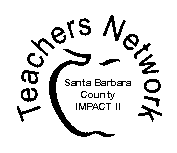The TeachNet Project sponsored with major funding by the AT&T Foundation,
seeks to improve student achievement by providing training, grants, networking and resource sharing to teachers at seven of the Teachers Network affiliates.


www.qad.com
Creating
Continents, Climates, and CulturesUnit Overview
"Creating Continents, Climates and Cultures" is a designed to be a comprehensive enrichment unit which helps students make cognitive connections between physical land formations, climate patterns, and the cultures that develop therein. The unit builds upon each lesson toward the successful completion of the "Continent Project." It is important that all students complete the lesson successfully in order to advance to the next stage of the project. You may collect and check for accuracy and give written feedback, or check the student groups off as you monitor their progress and give help where it is needed. The students will need to refer to previous tasks as they relate them to the development of the project.
Unit Assessment
I believe that an important part of student learning is allowing the students to assess their own work. They will ultimately be held accountable to the teacher's assessment of student mastery, but the critical skills obtained by analyzing their own work and self correcting should not be underestimated. I have developed a "Self-Assessment Rubric" for this unit which can be used by the students and teacher. Continent Project Assessment Rubric
Social Science Standards Addressed
Students will be able to:
. Identify the major physical land formations on each continent.
. Have an understanding of latitude and longitude.
. Explain relationships between physical land formations, climate patterns, and the cultures.
Estimated Time for Project
The entire unit should take about 10 to 15 class periods depending on age and ability.
Software & Materials Used
Basic internet connections are required for this unit. Although, if only the teacher has access to the internet, materials may be printed out and photocopied for the students. Classroom materials are basic: Classroom atlases (or internet access to atlas sites), white construction paper, scissors, glue, paper, and colored pencils.
Key Words
Lesson Plans, Social Studies, Geography, Physical Land Formations, Continents, Longitude, Latitude, Climate, Culture, Standards, Maps, Writing, Project, Middle School, Junior High School
Students
I have taught this unit to a number of students with differential learning abilities. The students have traditionally been between 11 and 14 years old with heterogeneous cultures, ethnicities, and affluency levels. Virtually all students respond positively to the creativity offered in this unit. It offers an opportunity to succeed and most students perform to the expected levels of expectations.
Overall Value
One of the strong points of this project is it is easily modified for students with learning difficulties or second language learners. The unit offers the teacher many opportunities to interact with students in an active and positive way. Certain lessons are well suited to collaborative activities which keep the students actively participating the majority of the time. The lessons are exceptionally strong in getting students to use their higher thinking skills while they synthesize and apply knowledge based information about Continents, Climates and Cultures.
Subject Area: Social Studies
Second Subject Area: Language Arts (can be a good writing unit)
Starting Grade Level: 5th
Ending Grade Level: 9th
Tips for the Teacher
The most important tip I can give to a teacher of this unit is to enjoy the teaching of each lesson. Don't hesitate to make changes and invent your own ways of presentation, but be sure to strive to intrigue the students with all of the possibilities as they create their own new world.

Michael W. Orton
Fesler Junior High School
e-mail: mikenannie@charter.net
Mike Orton has been a 7th and 8th grade teacher in the Santa Maria-Bonita School District, on the beautiful central coast of California since 1991.
He received his degree in social science at U.C. Irvine, completed his credentials at Cal. Poly. San Luis Obispo, and earned a Masters in Teaching from Grand Canyon University. Having been an actor before a teacher, Mike enjoys bringing his talents as a performer into the classroom. He believes an active and positive classroom climate is the means to curriculum mastery, so play it up and have some fun!